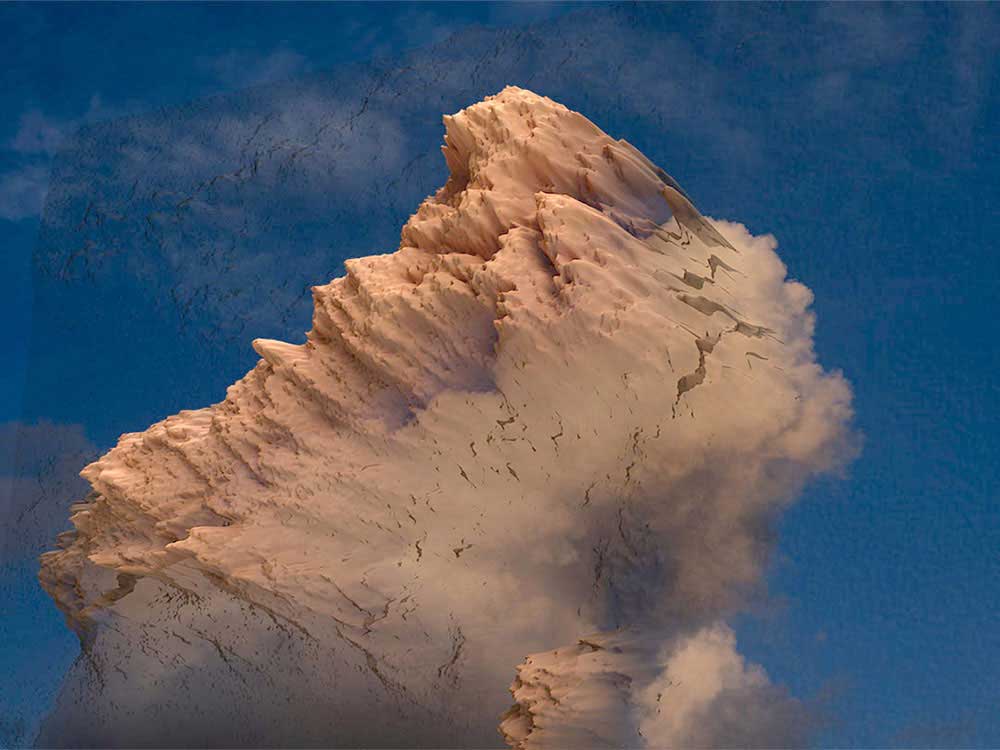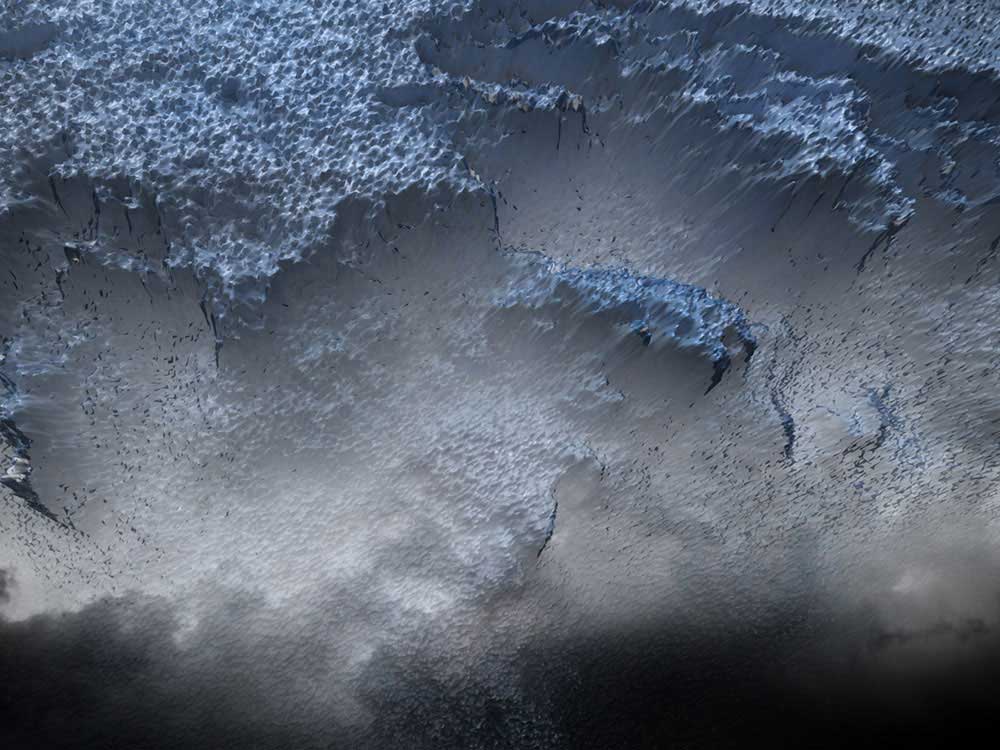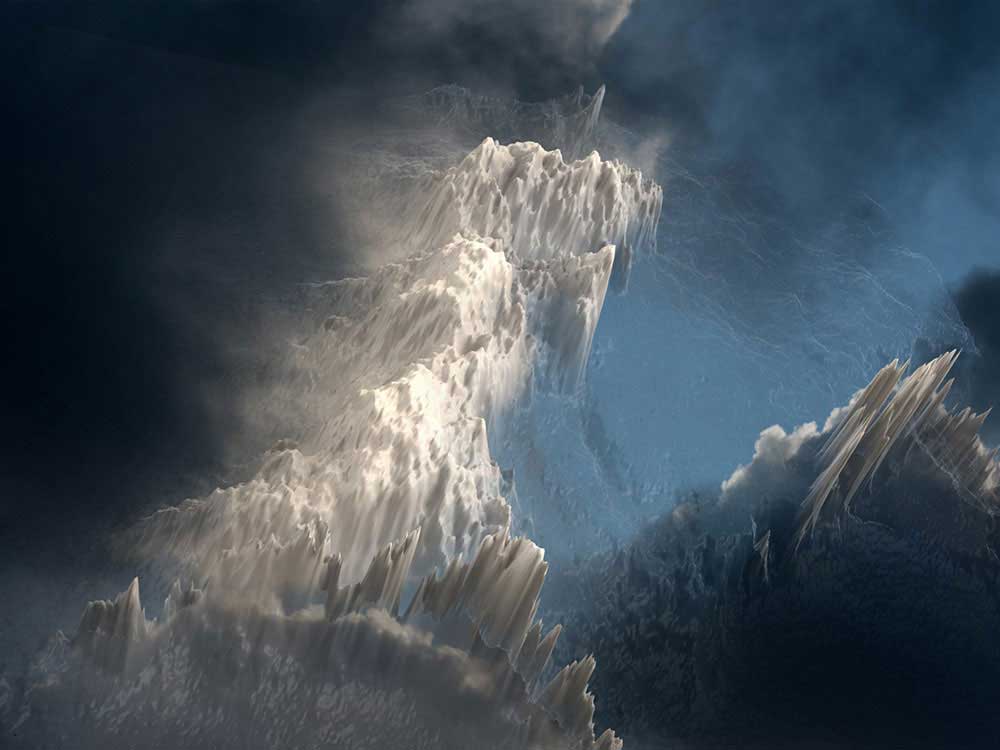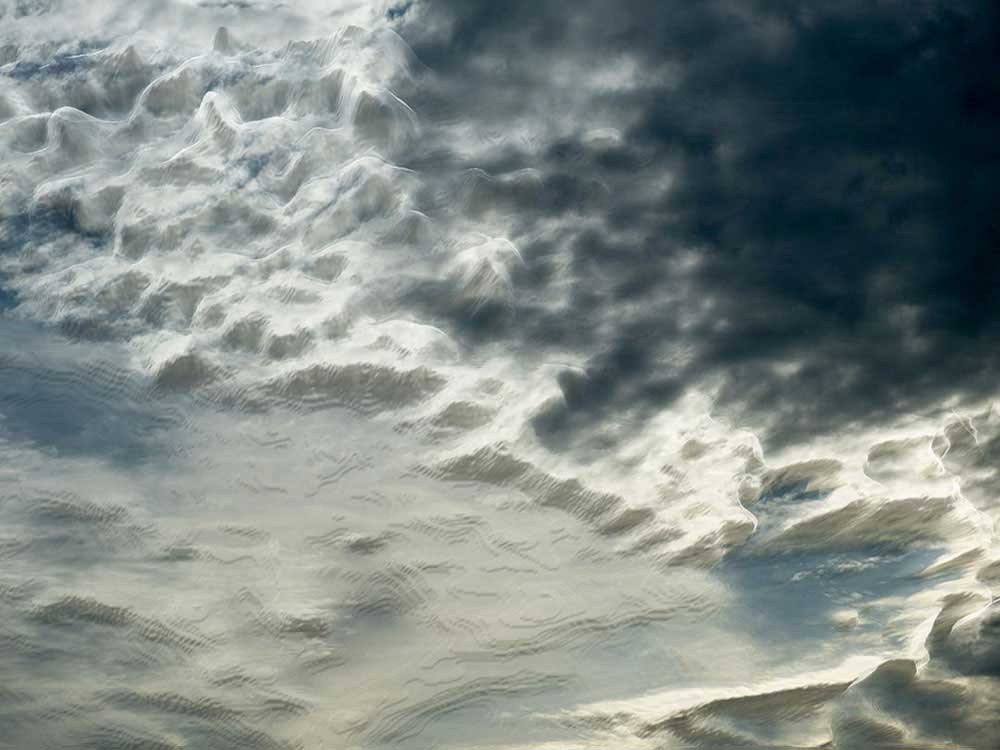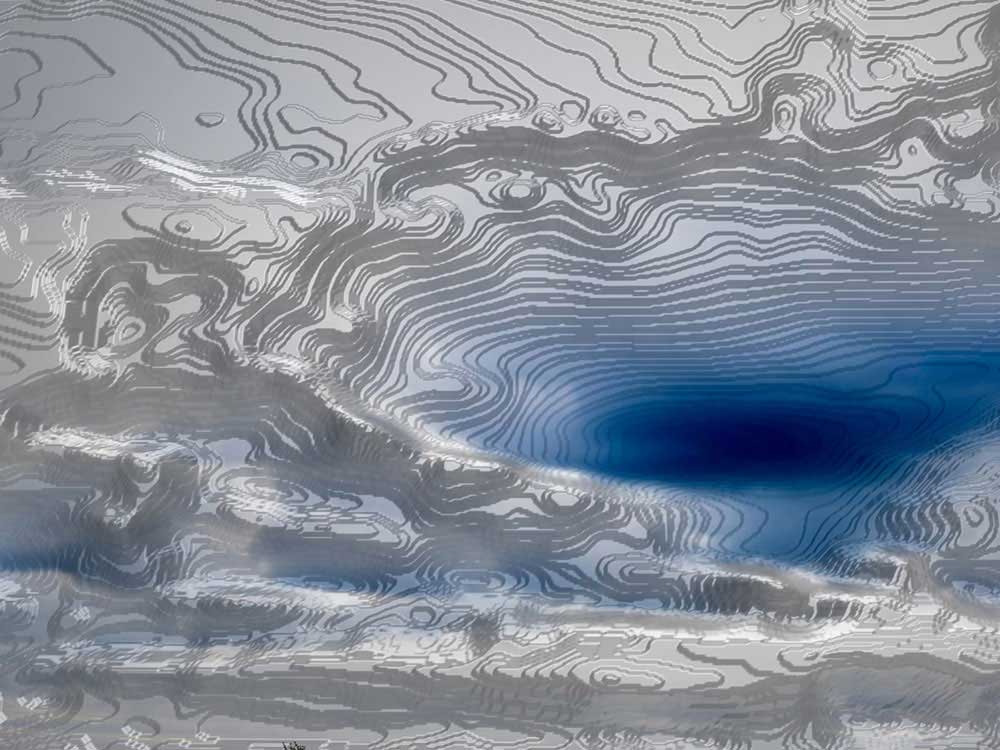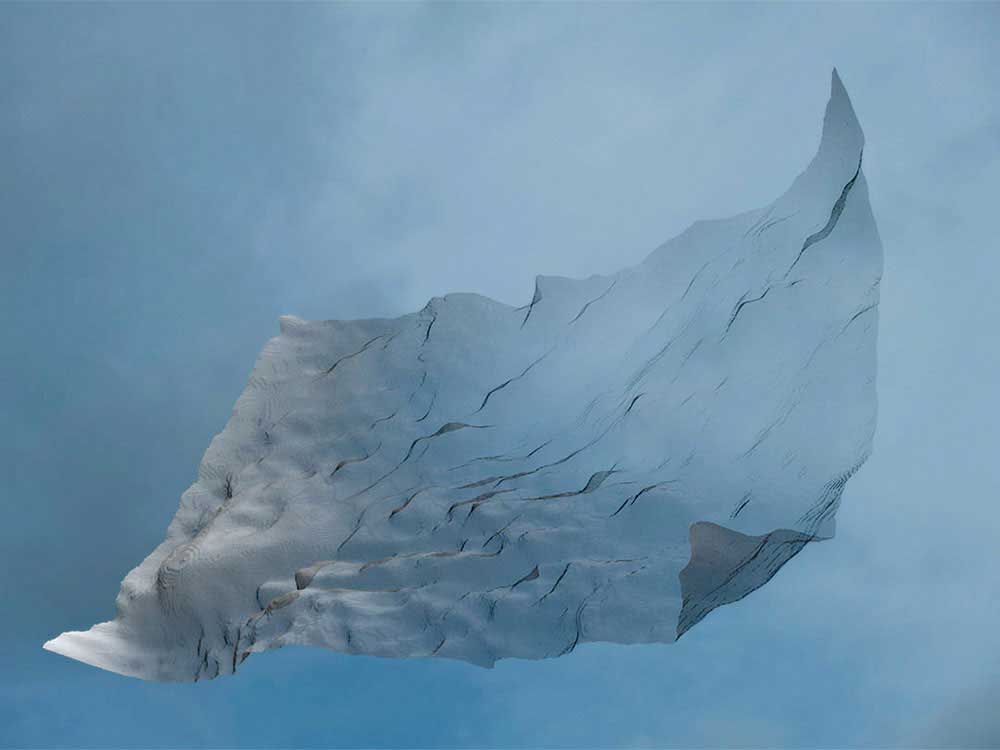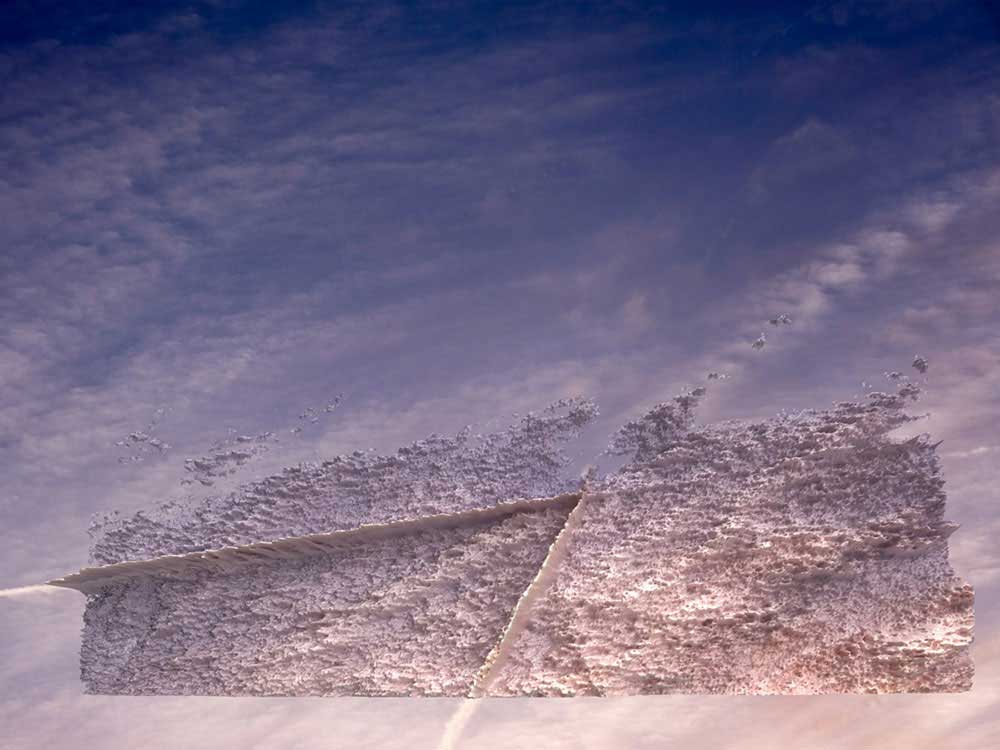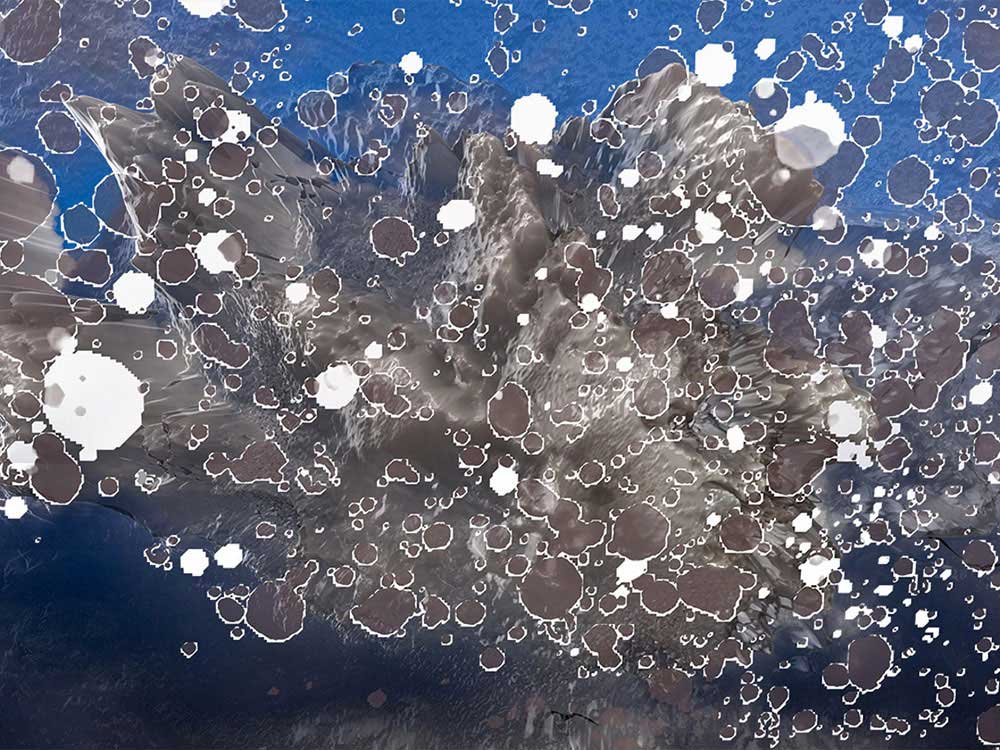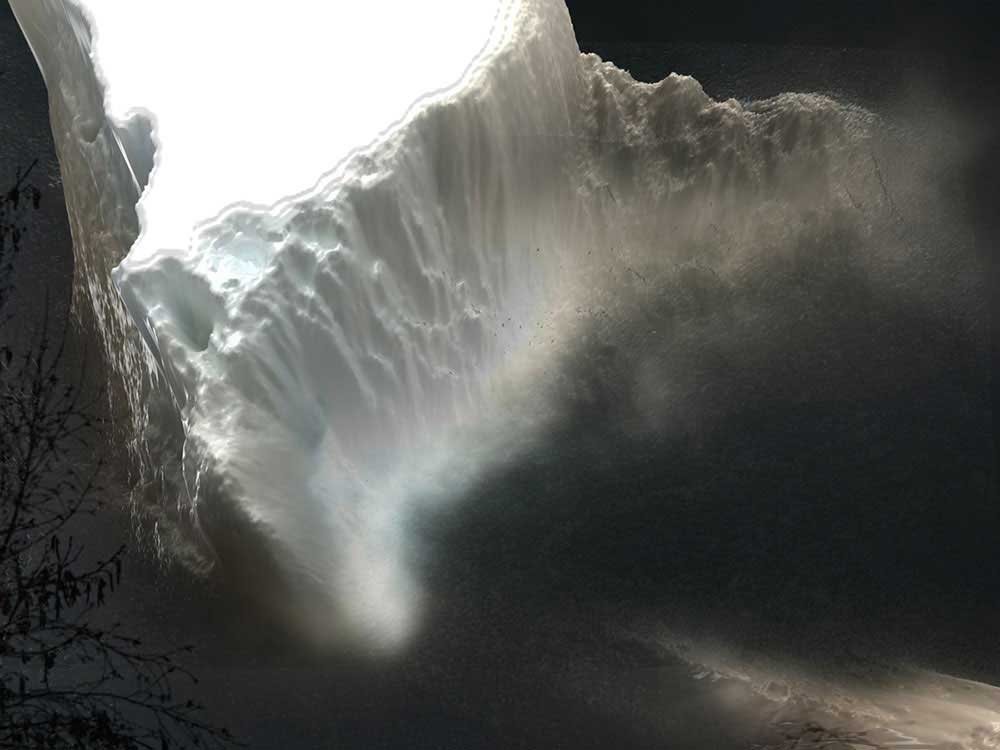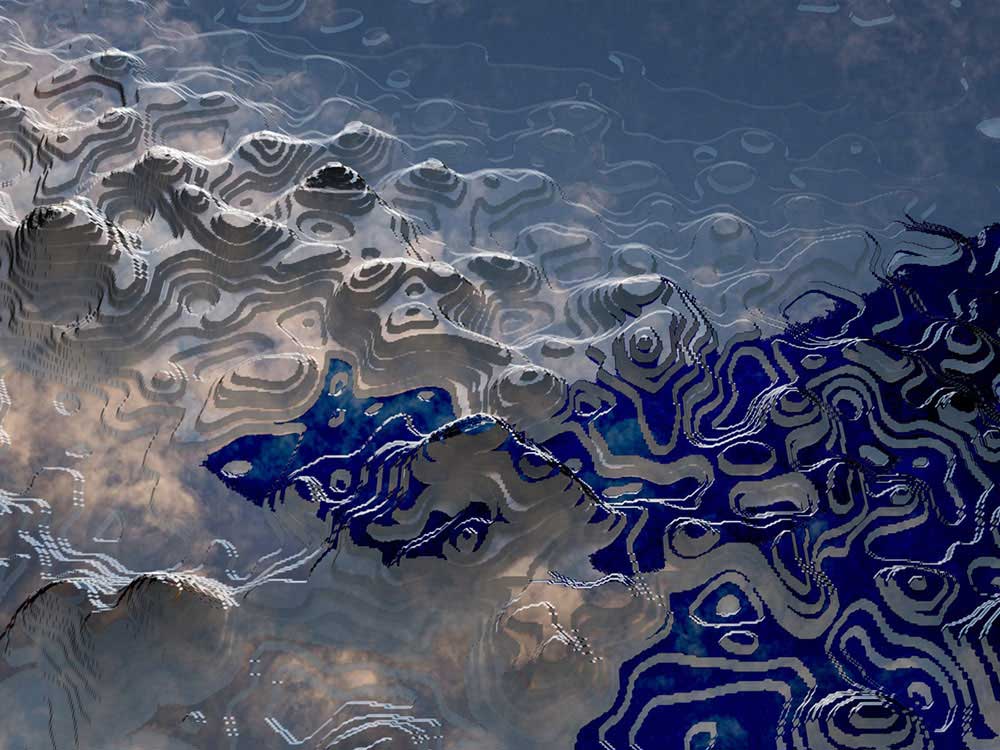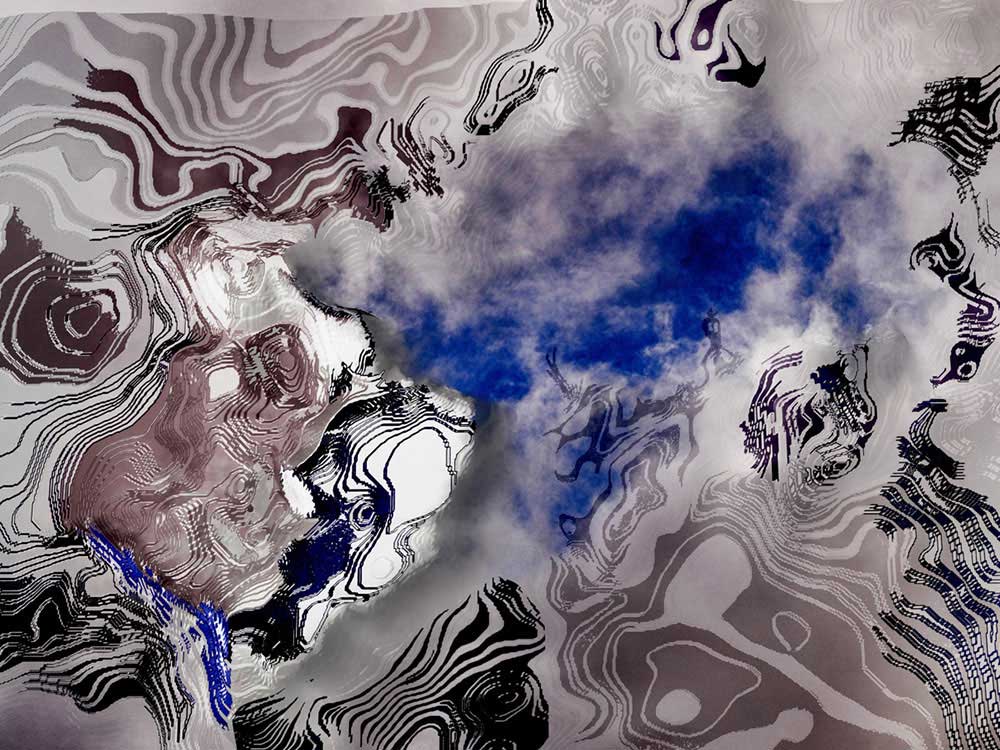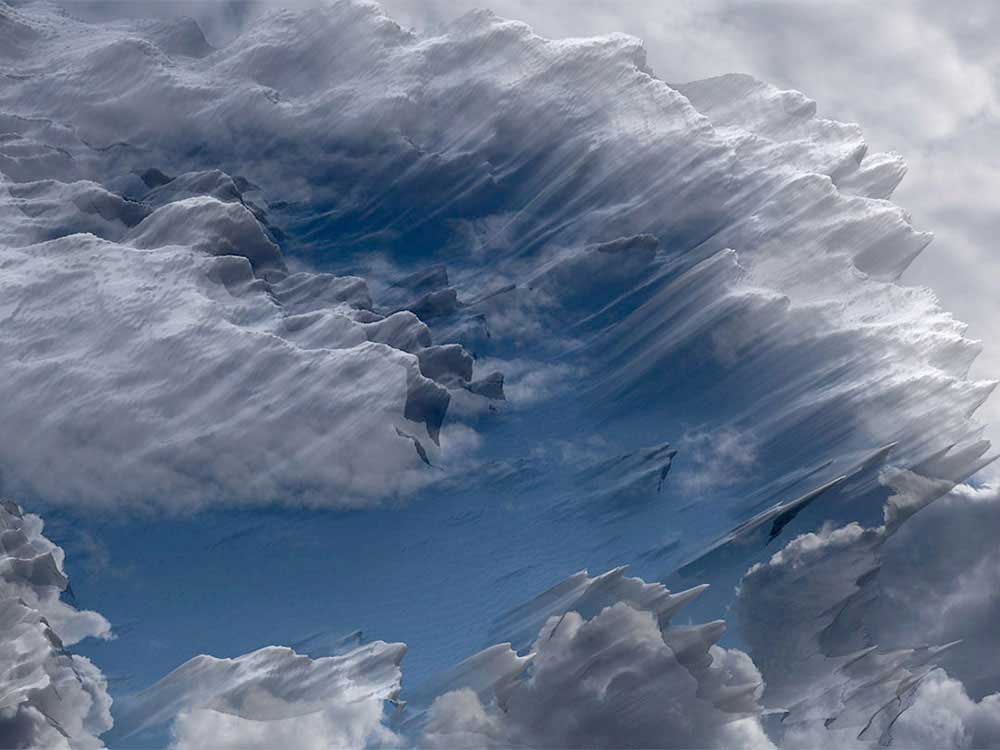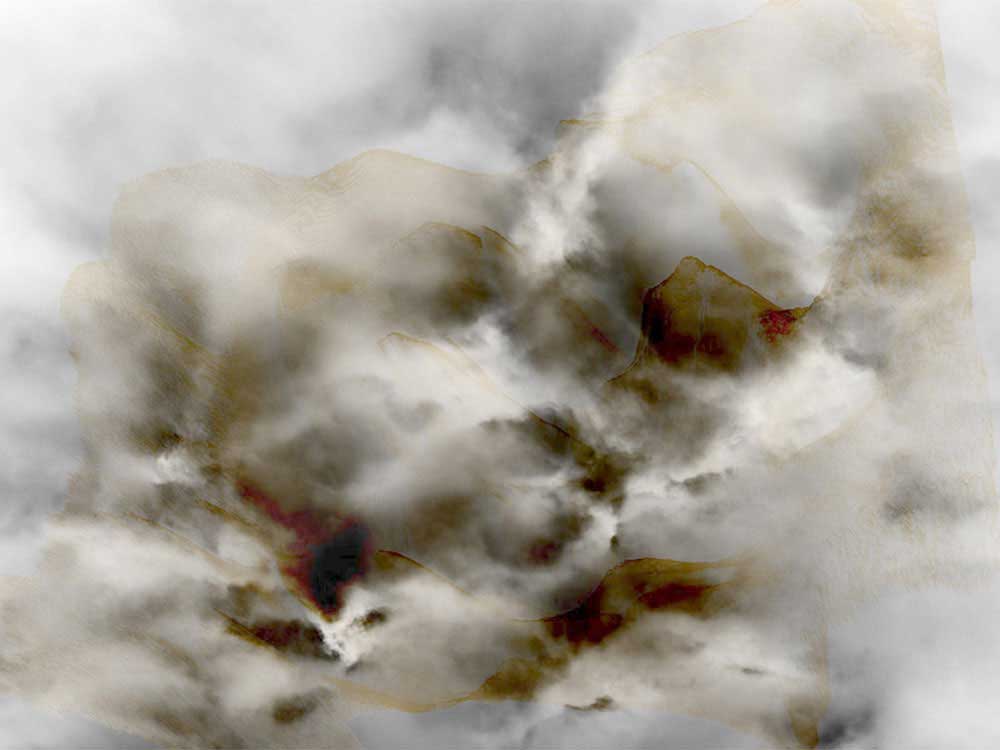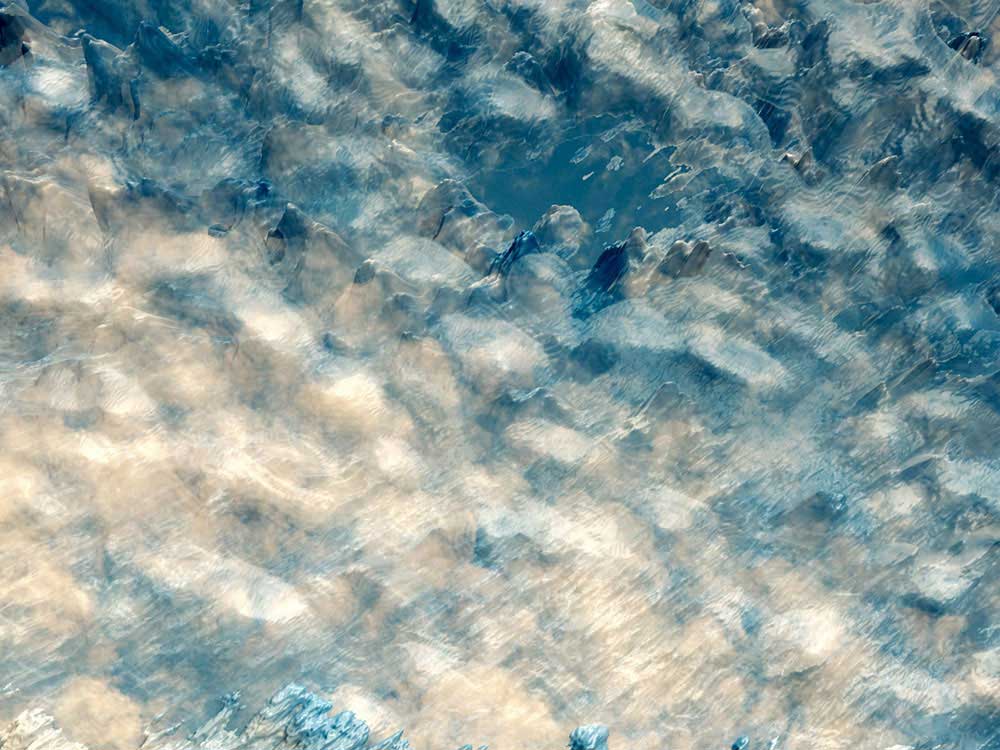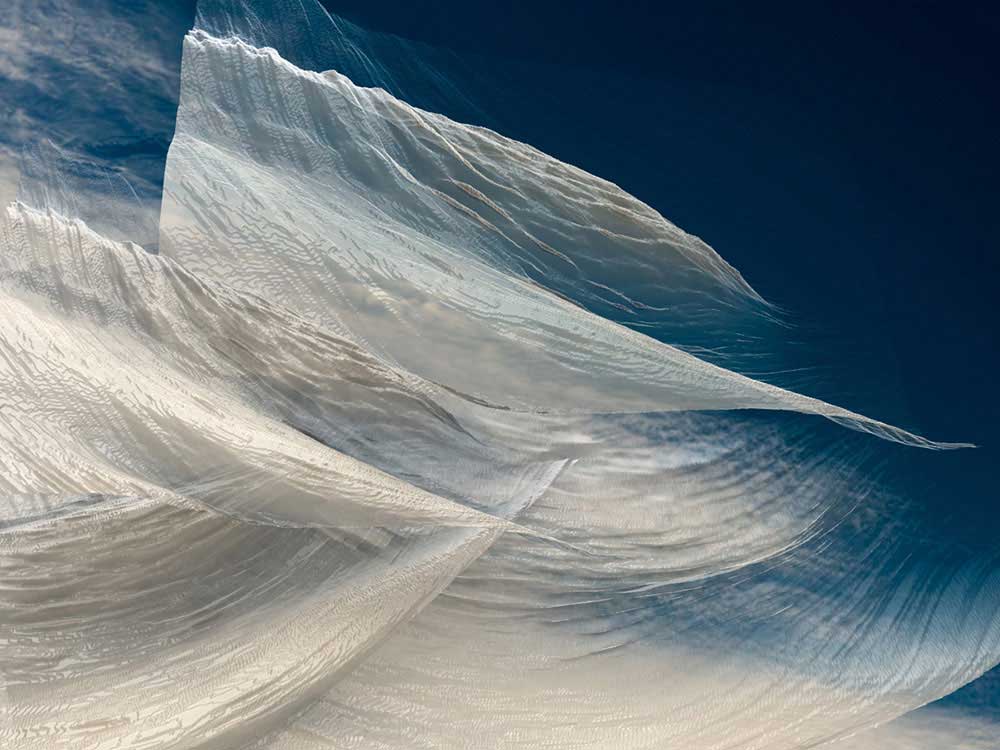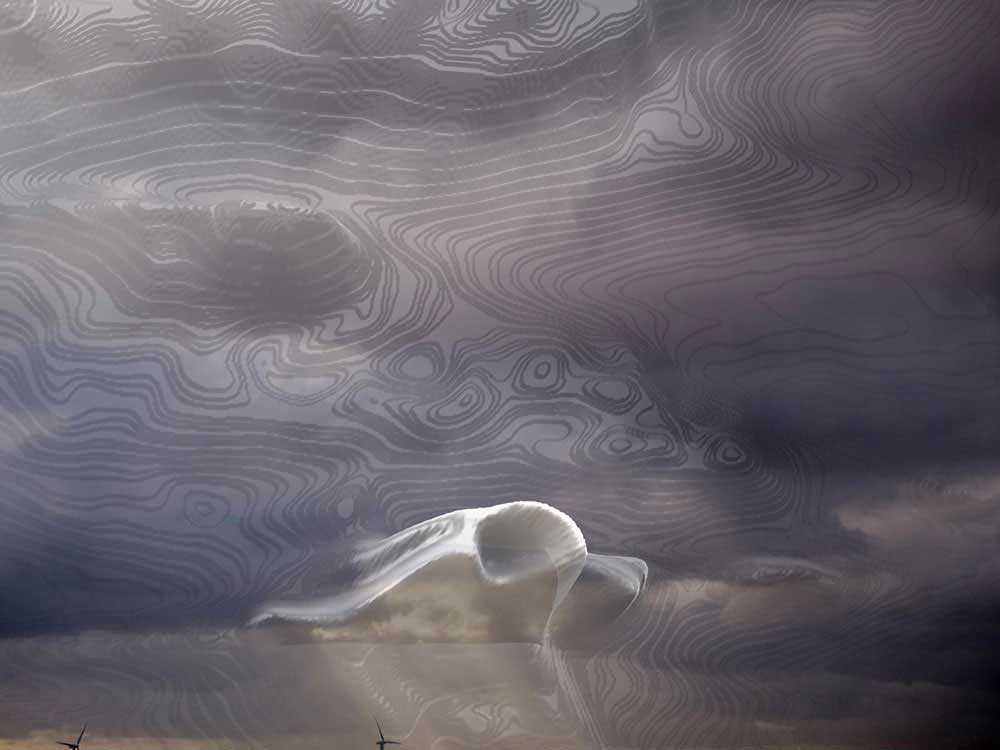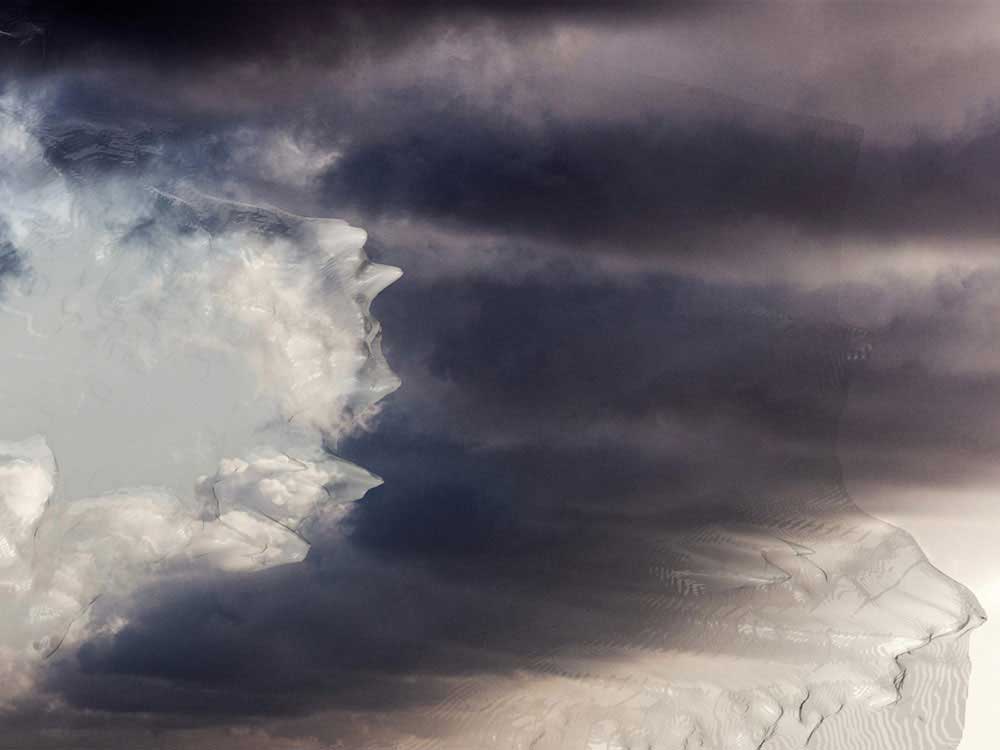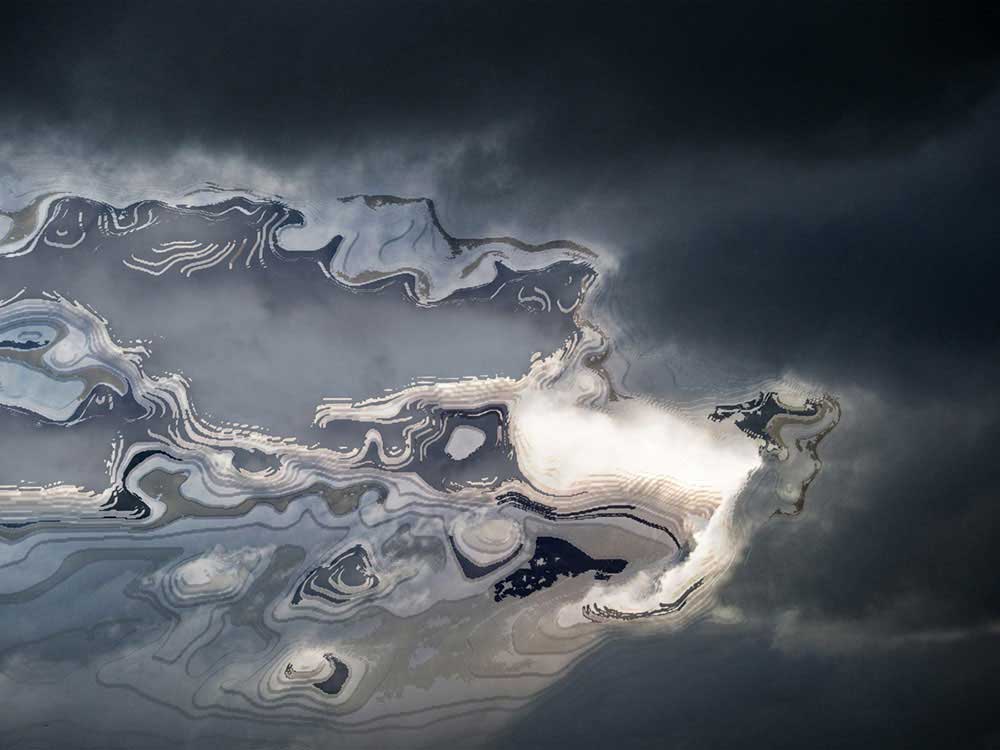Clouds are moving towards the poles and are threatened with extinction.
In this photographic research project, I use the, sometimes latent, information from photos to create images that focuses attention on the clouds with the aim of contributing to the conversation on climate change.
Magic is an attitude, which instead of taking images to orient oneself in the world, takes the world to orient oneself in the image. (Flusser 2000: 9)
Clouds and climate change
Clouds are hugely important in regulating the temperature on earth. They play a role in absorbing harmful greenhouse gasses and reflecting sunlight. However, since the industrial revolution, clouds do not only naturally occur but also can be artificially manufactured. The Newest Cloud atlas from 2017 contains 10 “Genera” of clouds. Six of them can have a human-made origin.
Ever since the 1930s governments and industry have used scientific advancement to manipulate the weather. The Climate Crisis and human interference have major consequences for the clouds. Recently they seem to have been gathering to move more towards the poles and are therefore less effective in moderating the overall temperature of the globe. The latest studies even show that at a high concentration of CO2, the clouds completely disintegrate and disappear.
Without clouds, the Earth will get 8 to 10 degrees warmer. Scientists are testing ways to make and grow clouds themselves to help cooling down the earth; geo-engineering and cloud seeding. They want to investigate how the clouds are build, what is in the clouds, how big they are and how fast do they change.
How are the images made?
Based on the contrast in the photo, I make a so-called bump-map / height-map that is converted into a 3D object. That 3D object is mixed with the original photo and can take all kinds of shapes.



